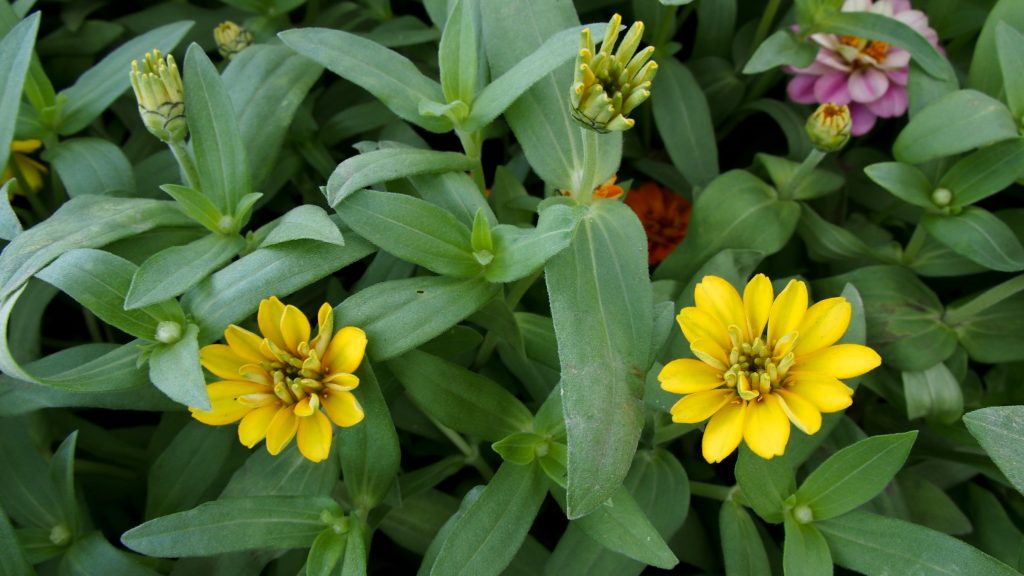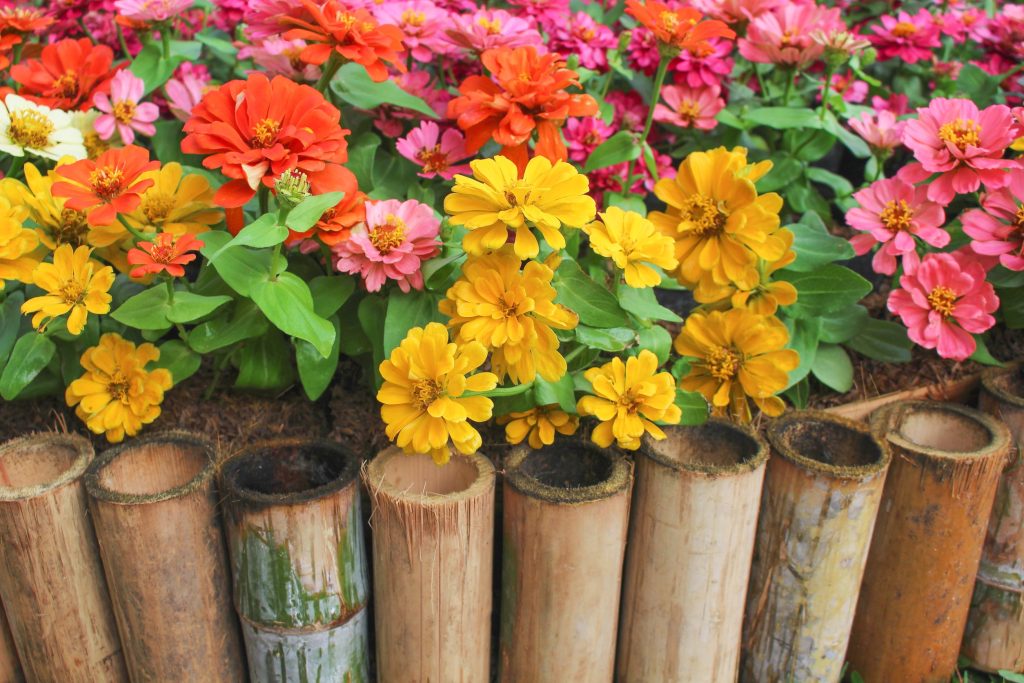Are Zinnias Deer Resistant? The answer is Yes, and Here’s Why!
Fortunately, zinnia blossoms are unappealing to deer. They rank among the best garden flowers because of their deer resistance. Being non-toxic to animals, zinnias are also safe to grow close. Even in an area with a high concentration of deer, it is possible to produce these flowers without difficulty and still have a good chance of seeing them bloom.

However, several locals assert that deer had eaten their zinnias, most frequently when the plants were still in their juvenile stages. New plant buds are one of the most desirable foods for deer. We advise using deer repellents to keep deer from nibbling on your zinnias.
Table of Contents
Why Are Zinnias Deer Resistant?
It sounds like they were doing something similar to a wine tasting. Just a little bit, taste it and then spit it out. These zinnias had foliage that the deer did not find to their liking at all. The zinnia examined was relatively small, but it had already produced numerous buds and at least one flower despite its youth. Like their counterparts in the cottage garden, the other zinnias in the deer gardens have reached a greater height and have been producing flowers intermittently.
So why do deers not like to eat zinnias? There are two primary explanations for this. The first is that they have an excellent capacity to regenerate after being nibbled on. Some flowers are extremely sensitive, and the slightest disruptions can cause them to lose their bloom.
On the other hand, Zinnias are more resistant to damage, so even if deer nibble a portion of the plant, it is not likely to perish entirely.
On the other hand, Zinnias are typically avoided by deer because of their prickly centers. In the same way that you wouldn’t take a bite out of a full pineapple, with its spiny rind and everything, deer naturally don’t want to eat thorny flowers such as zinnias since they are uncomfortable doing so.
Zinnias are one of the greatest blooming plants to choose if you want something that can be resistant to and eventually prevent deer from eating your plants. Because of their spiky character and their ability to withstand harsh conditions, zinnias are by far the best option.
Ways to Ward Off Deers
Remember that there is no such thing as a truly deer-proof tree, shrub, plant, or flower. Therefore, deer may nibble on it if they cannot find their preferred choices.
Building Fences
One simplest and most effective way to discourage deer is to build a fence around it. Deer will not cross a sturdy fence, so this is one way to keep them away from your plants. To accomplish this goal, the height of the fence you will need to create should be roughly 8 feet. This may appear excessive; nevertheless, there have been studies done with whitetail deer that reveal the vast majority of the population can jump over a fence that is 6 feet high. This information was gleaned from the results of this research.

At 7 feet, much fewer deer will be able to overcome the fence, and at 8 feet, the fence will be sufficiently high to serve as a deterrent, preventing the deer from even attempting to clear the fence.
Flashing Lights
Another way to keep deer away is by using flashing lights. This can be done in two ways: using a motion-activated light or a red nightlight.
Spurts of Water
Creating sprays of water in areas where deer are known to frequent can also help discourage them. This can be done using a garden hose, pouring water from a bowl, or using an automatic sprinkler system.
Scatter Some Human Traces
In contrast, deer are quite good at recognizing the fragrance humans leave behind and generally steer clear of it for obvious reasons. Therefore, sprinkling hair around your plants can help keep them away. The one potential downside of this tactic is that deer may also become accustomed to the smell and start coming around less conspicuously, potentially leading to them consuming your plants.
Scaring Off Through Loud Noises
These can take several forms, such as loudly played recordings of animals or barking dogs. However, this may not always be effective in deterring deer from an area. They are creatures of habit and will often return to areas where they have successfully encountered something that scares or confuses them in the past.
Using Deer Repellents
One of the most effective ways to keep deer away from plants is using products designed to repel them. These can be bought at garden stores or online and come in several varieties, including those that release smells such as garlic or peppermint oil.
Creating Habitat Fragrance Barriers
One way to make it difficult for deer to get close to your plants is by creating artificial habitat barriers from materials like hay bales or logs. This will help confine them within a certain area and deter them from trying other parts of your garden where they may encounter more desirable food or mates.
Wind Chimes
This is a softer way of scarring deer through noises. Though not the more musical chimes will ward off every deer, deer may be able to get the message that this is not a good place to eat based on the combination of scent and taste provided by some of the alternatives described above-involving food.
Motion Sensors
One way to detect deer presence and vector them away from the area is through motion sensors. These can be set up in areas where plants are desired, such as near a fence or under a tree, and will trigger an alarm if they sense movement nearby, whether it’s of deer or other animals.
Create Yards with Different Levels and Hedges
This will discourage deer from venturing into yards, as they may become lost or frightened and wander away. The ground level should be different around the entire yard to foil their instinctual behavior of browsing for food at ground level. Hedges can also create a barrier between yards, and adding some water features or ponds can provide them with an area to drink.
Place in the Area Plants That Deer Are Reluctant To Eat
Planting plants deer do not like to eat, particularly at the perimeter of the property, which is the region where the deer first meet, is another tactic that can be used to discourage deer from browsing on a property.
The general rule is that deer will avoid plants with a strong scent, poisonous, or thorns. However, remember that this is just a general suggestion because deer will happily consume other items, such as the new shoots of roses. You may receive a more comprehensive list by going to the website of the New Jersey Agricultural Experiment Station, which has a long list of plants arranged according to the order of preference that deer have for eating them.
As you can see from this list, there is a wide variety of plants that can be grown in your garden that deer don’t enjoy all that much, and there are even some that can be strategically placed to keep deer away from your garden. Lavender is one example of this, as are other fragrant herbs like oregano, rosemary, and thyme.
